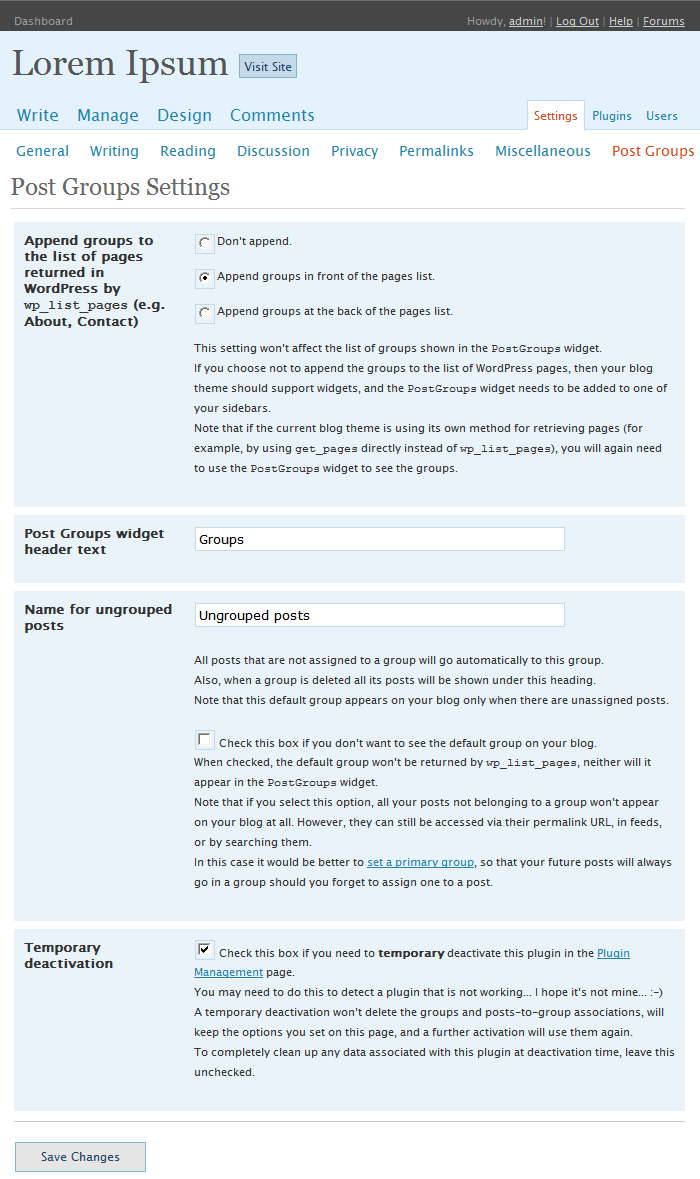Post Groups Wordpress Plugin - Rating, Reviews, Demo & Download

Plugin Description
One feature that I was looking for in WordPress was the ability to place my posts in their own separate pages. Thus, I would have different “sub-blogs” defined for the same WordPress site instead of the single weblog allowed by the default installation. PostGroups is a plugin that allows you to create such groups of posts, and each group can be navigated individually.
For example, you can create a group of posts called “Quotations” where you’ll place various citations from authors you like. Another group may be called “My pics”, where users may see all your travel photos, and so on.
This might sound similar with using categories. However, browsing all posts that belong to a category is in fact an archive-like browsing; depending on your blog theme, the posts will be shown differently from the normal posts page. For example, the posts may have only their titles shown, while their content may not be displayed at all; the whole listing may have a ‘Category Name Archives’ heading, which is quite different from what a normal blog home page looks like.
This plugin really splits your blog in different blogs, where each such sub-blog looks the same. And you can still use the same category on posts belonging to different groups. For example, an entry placed in a “Musings” groups may show the world what were your thoughts from your last visit to London, and assign it a, well, “London” category (among others). At a later time you can have another post under the same category, but neatly placed in your “My travel pics” group, where you gather photos only.
How it works
- Once activated, you need to define your post groups in the management page. Note that the plugin will have no visible effect on your blog until you won’t create at least one such group.
- Once a group has been created, you can start assigning posts to it in the management page for that group. You can create as many groups as you want… well, as many as it’s practical for your blog anyway.
- On the options page for the PostGroups plugin, you can opt for having your groups shown along with the list of WordPress pages (as returned by the
wp_list_pagesfunction defined by Wordpress); if your blog theme is using its own method for retrieving these pages, you can still show your groups in the special widget offered by PostGroups. - All posts that are not assigned to a group will go by default to a separate “Ungrouped posts” group (this default name can also be changed in the options page). Note that this default group appears on your blog as long as there are posts that are not yet assigned to a group. (You can also opt to have this default group hidden at all times.)
- You can also assign a post to a group at the moment when that post is written; you don’t need to save or publish it and then go to that group management page.
- If, for whatever reason, you need to temporarily deactivate this plugin, then you can set a special plugin option for this purpose; this will preserve all your groups and post-to-group assignments for a future reactivation.
Please report any issues in the support forum.
Screenshots
No screenshots provided



